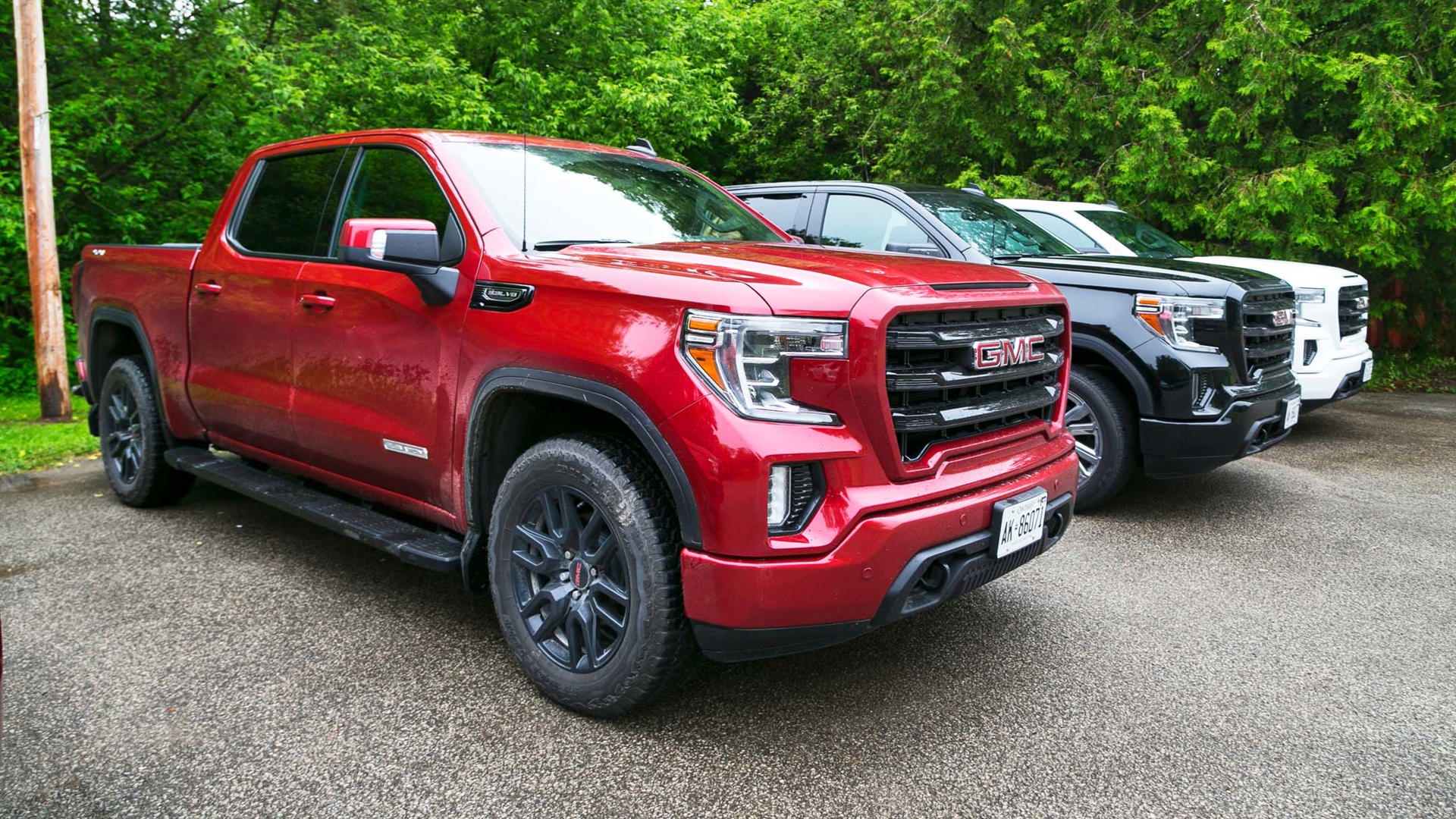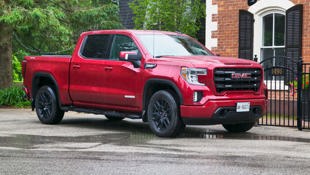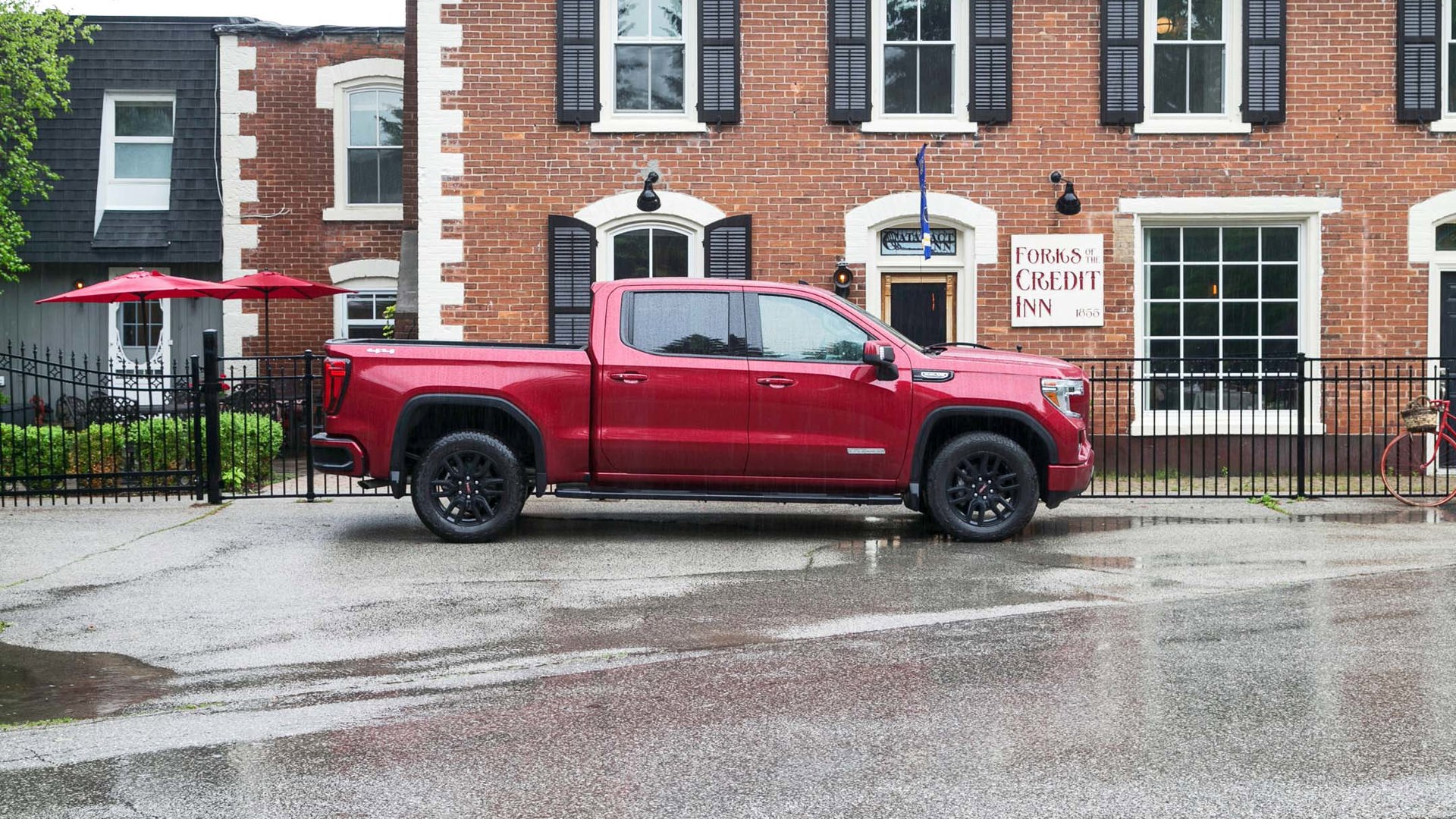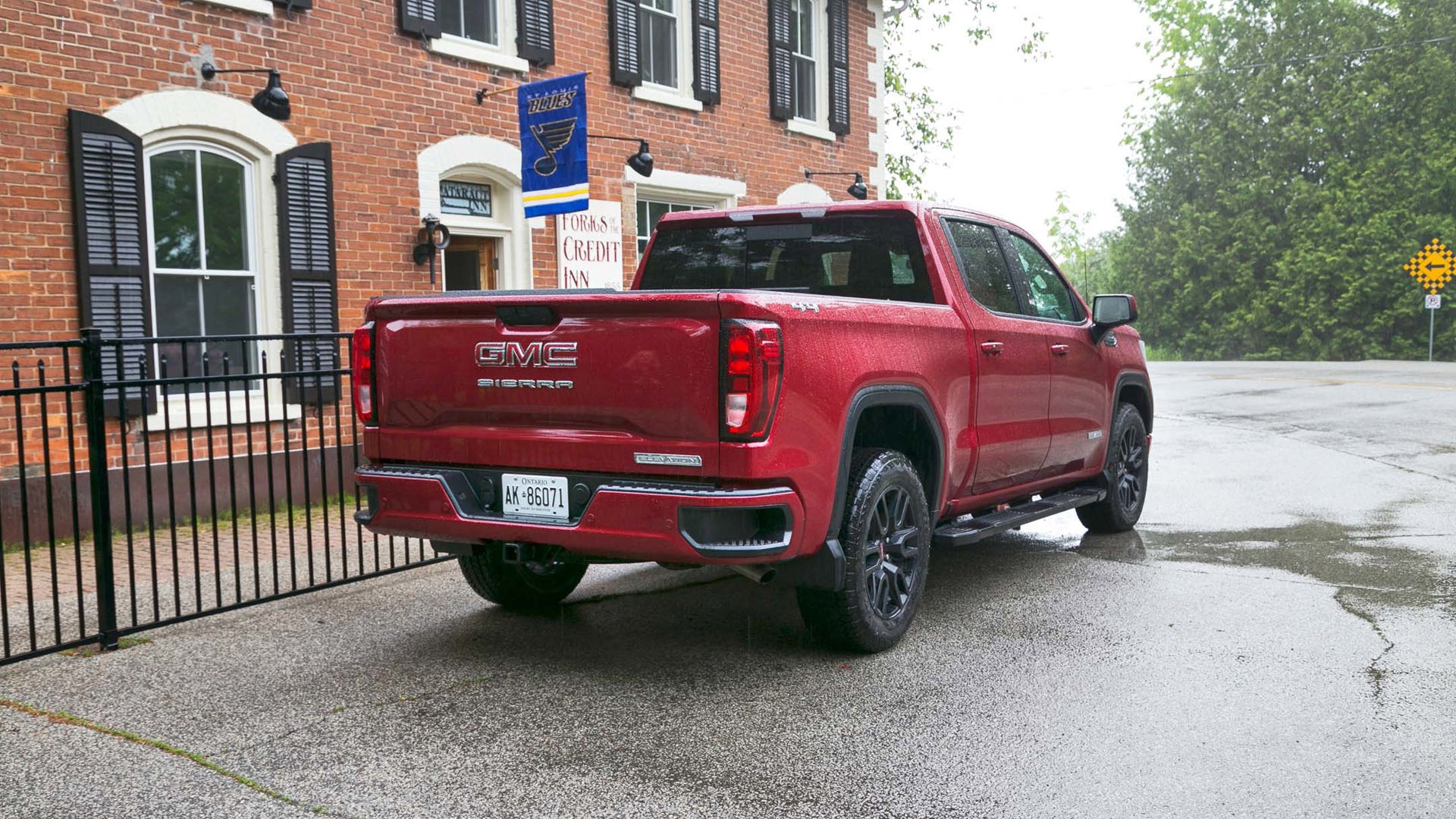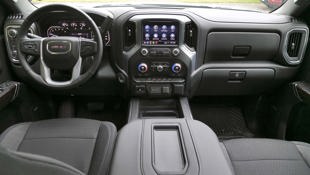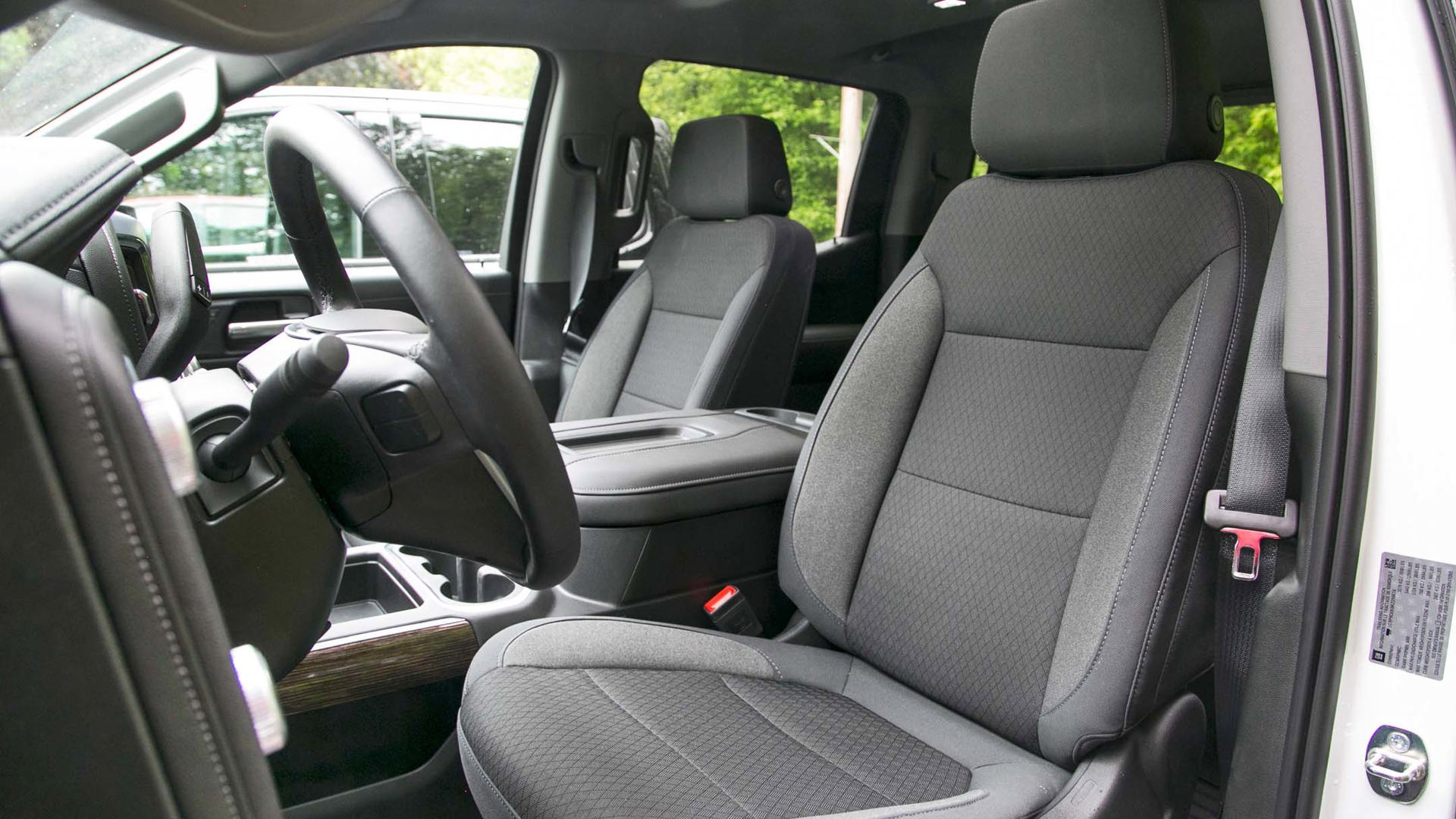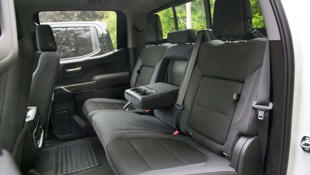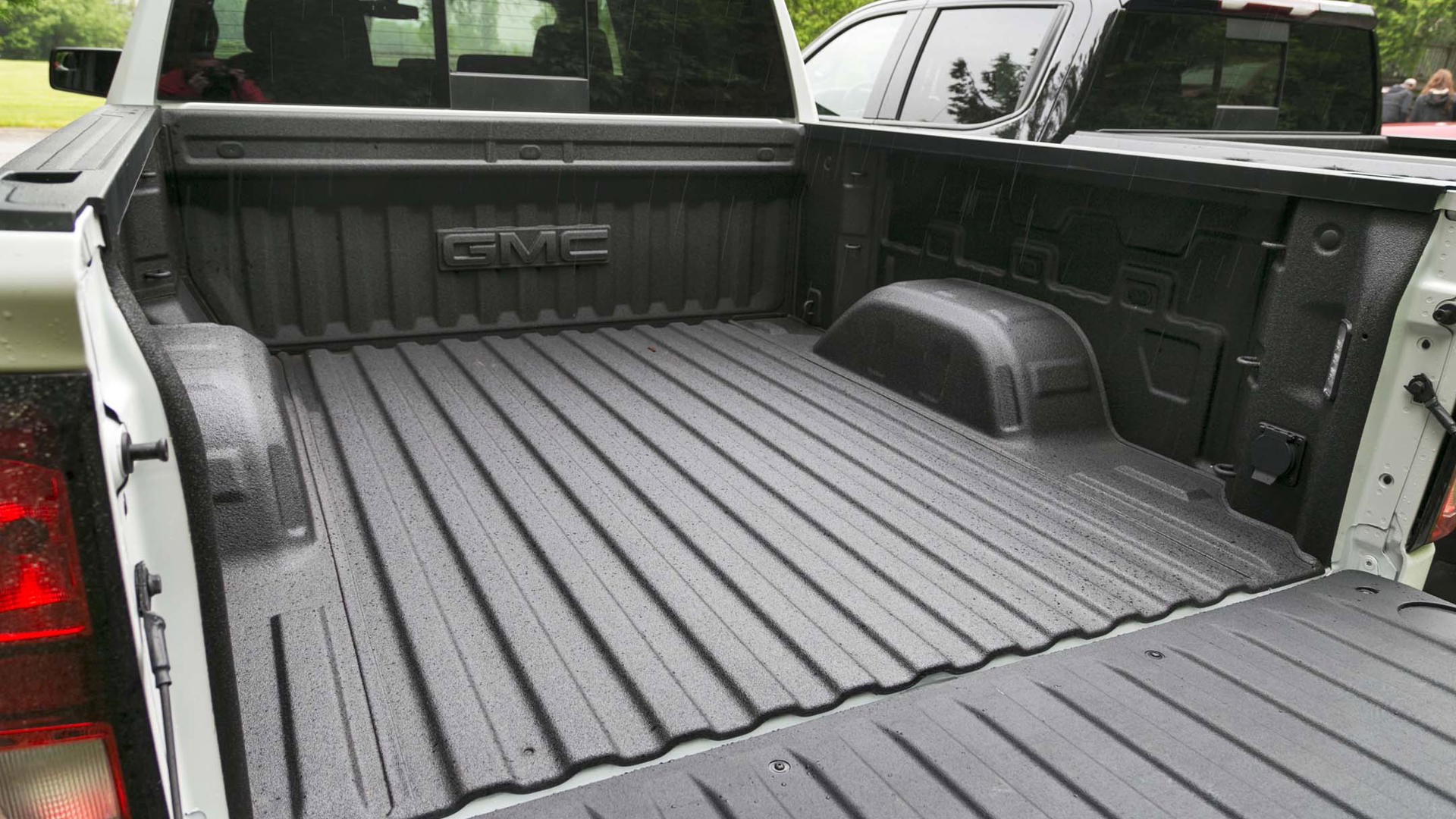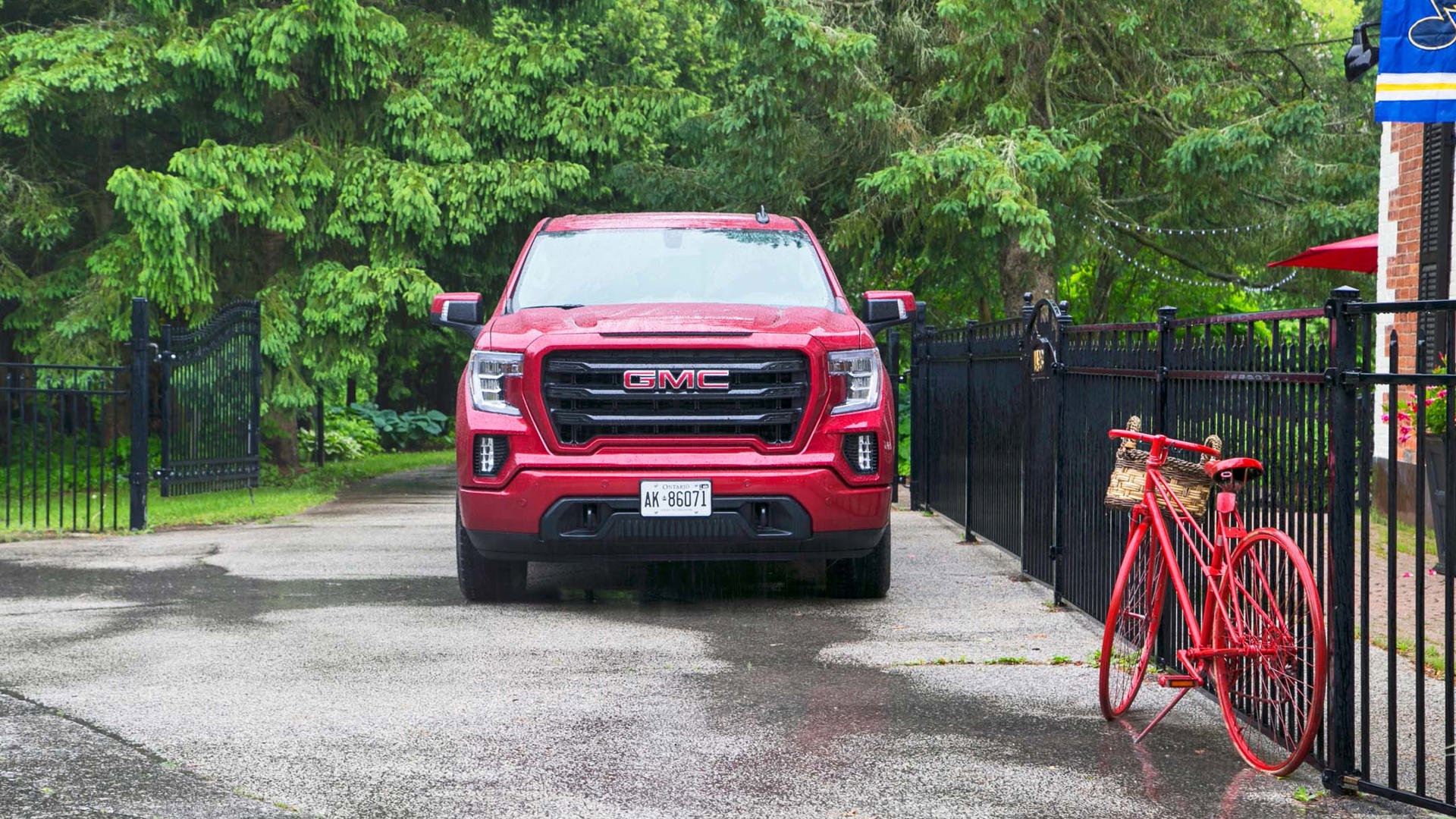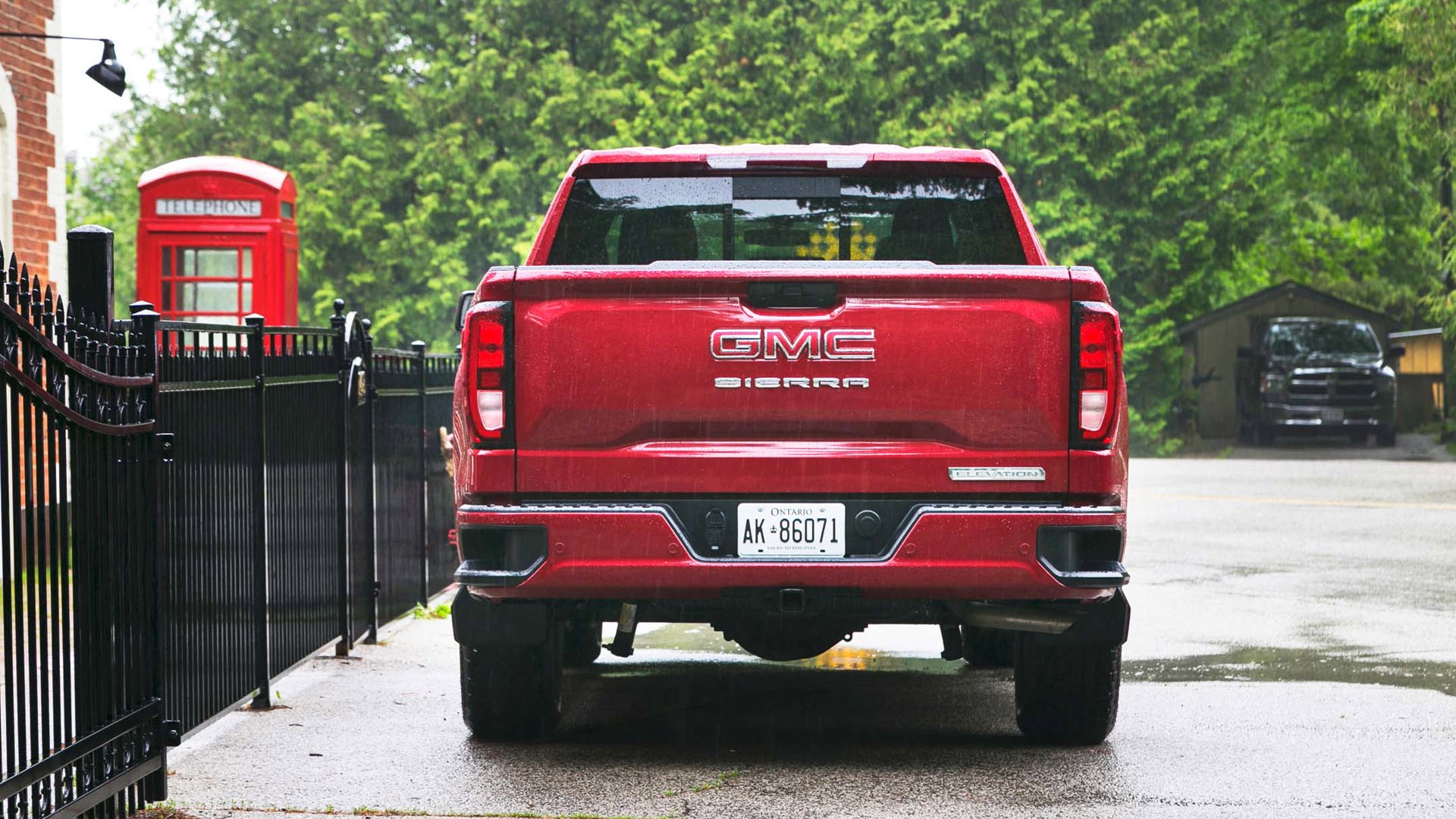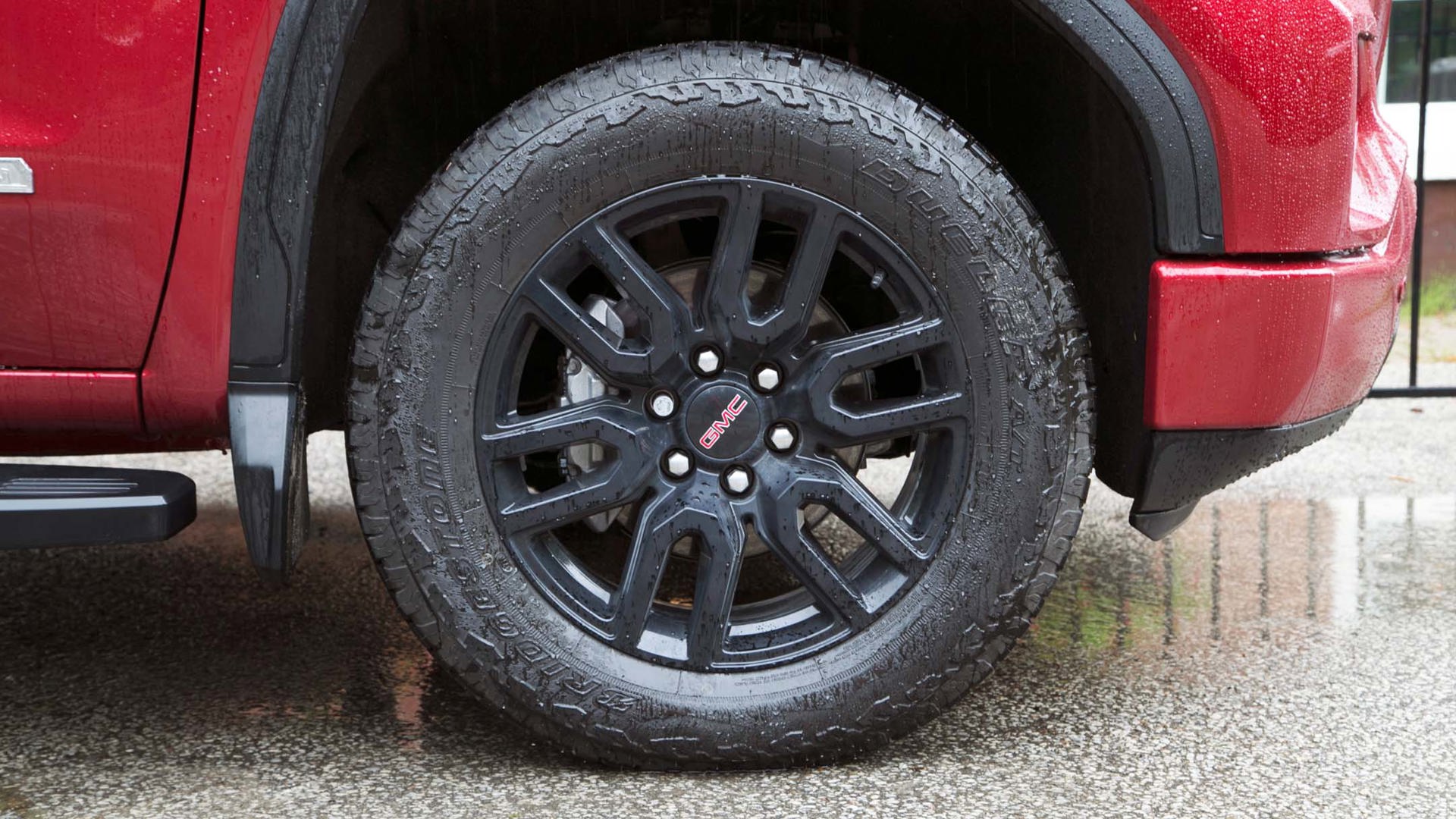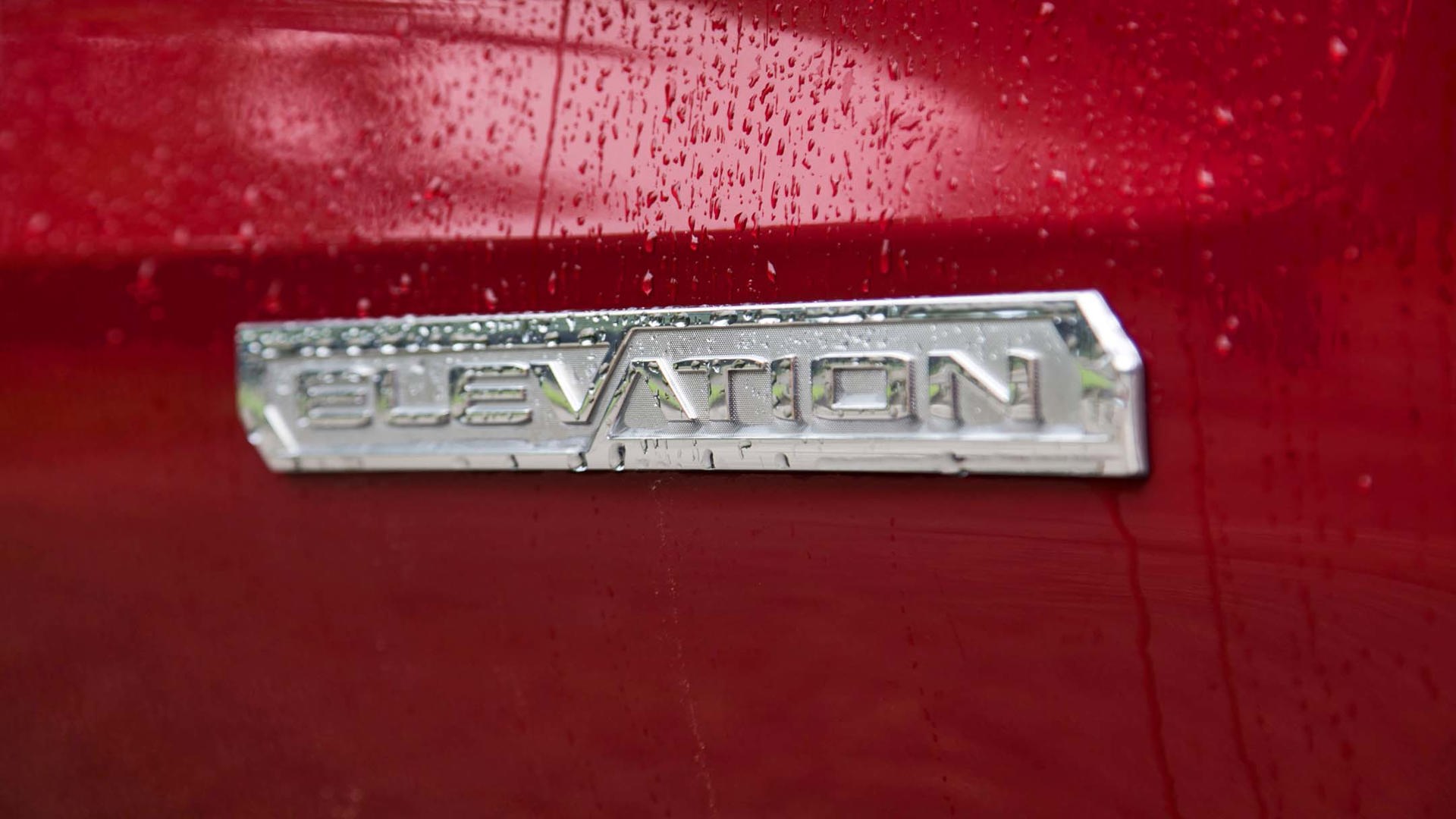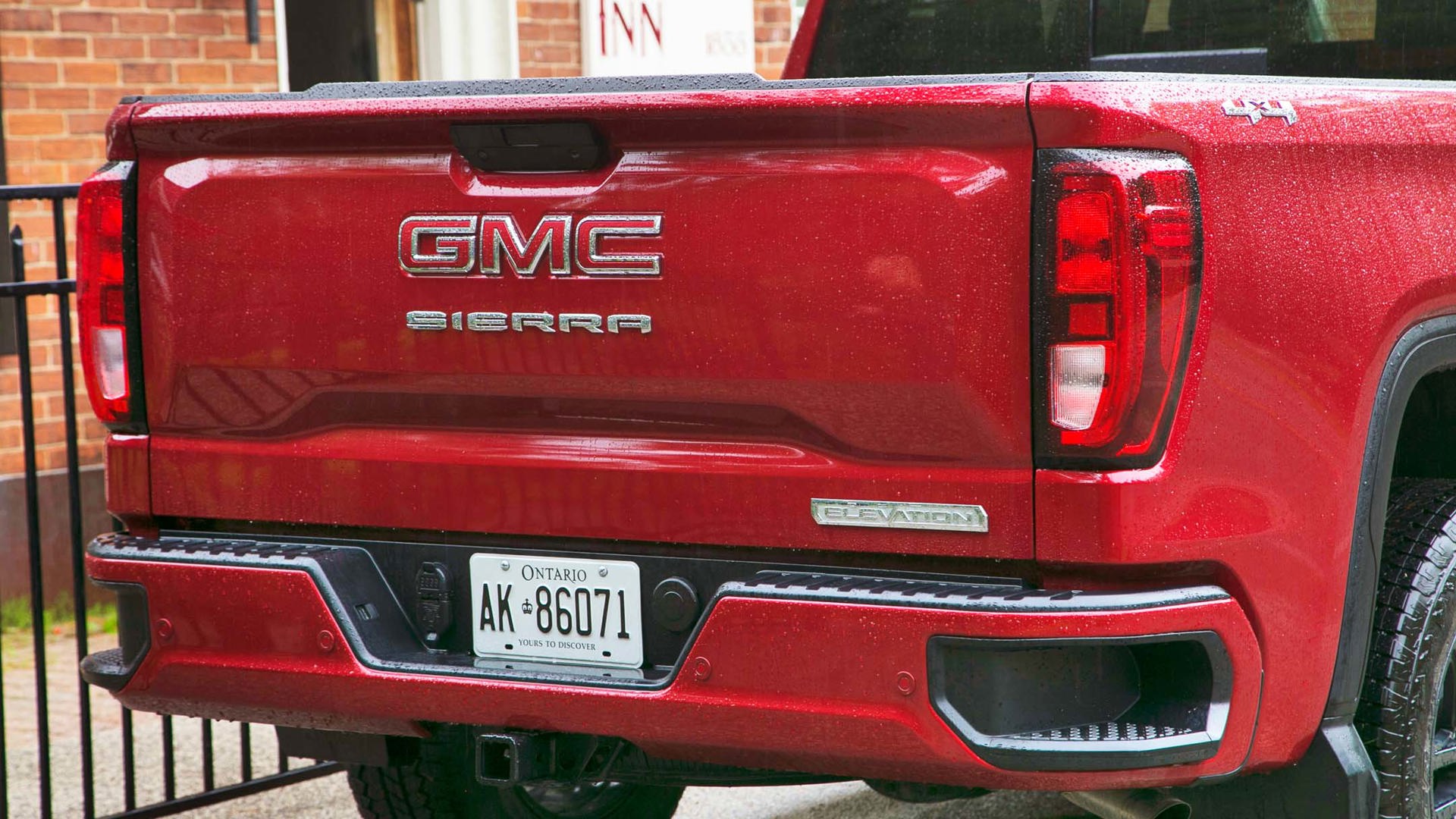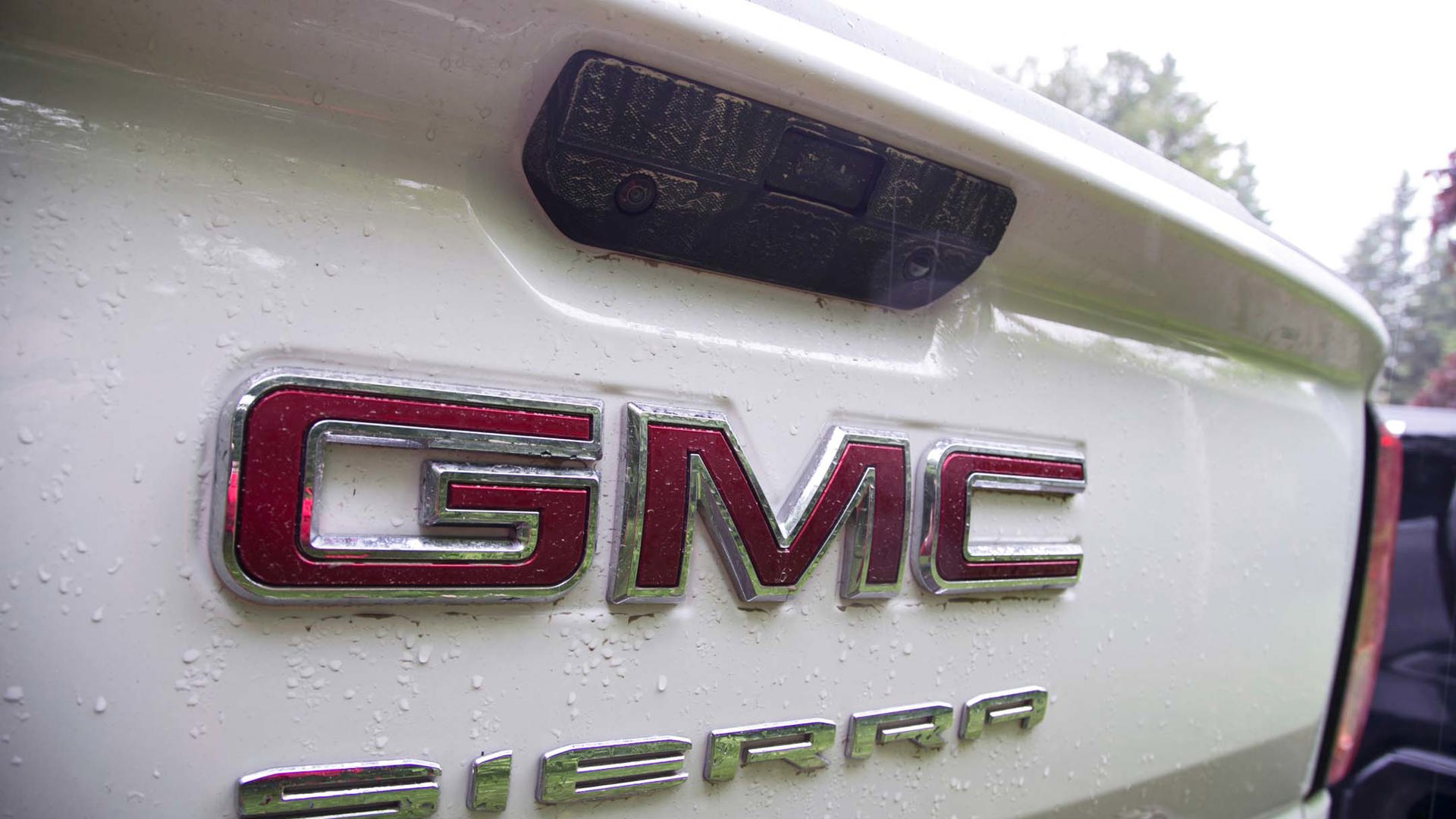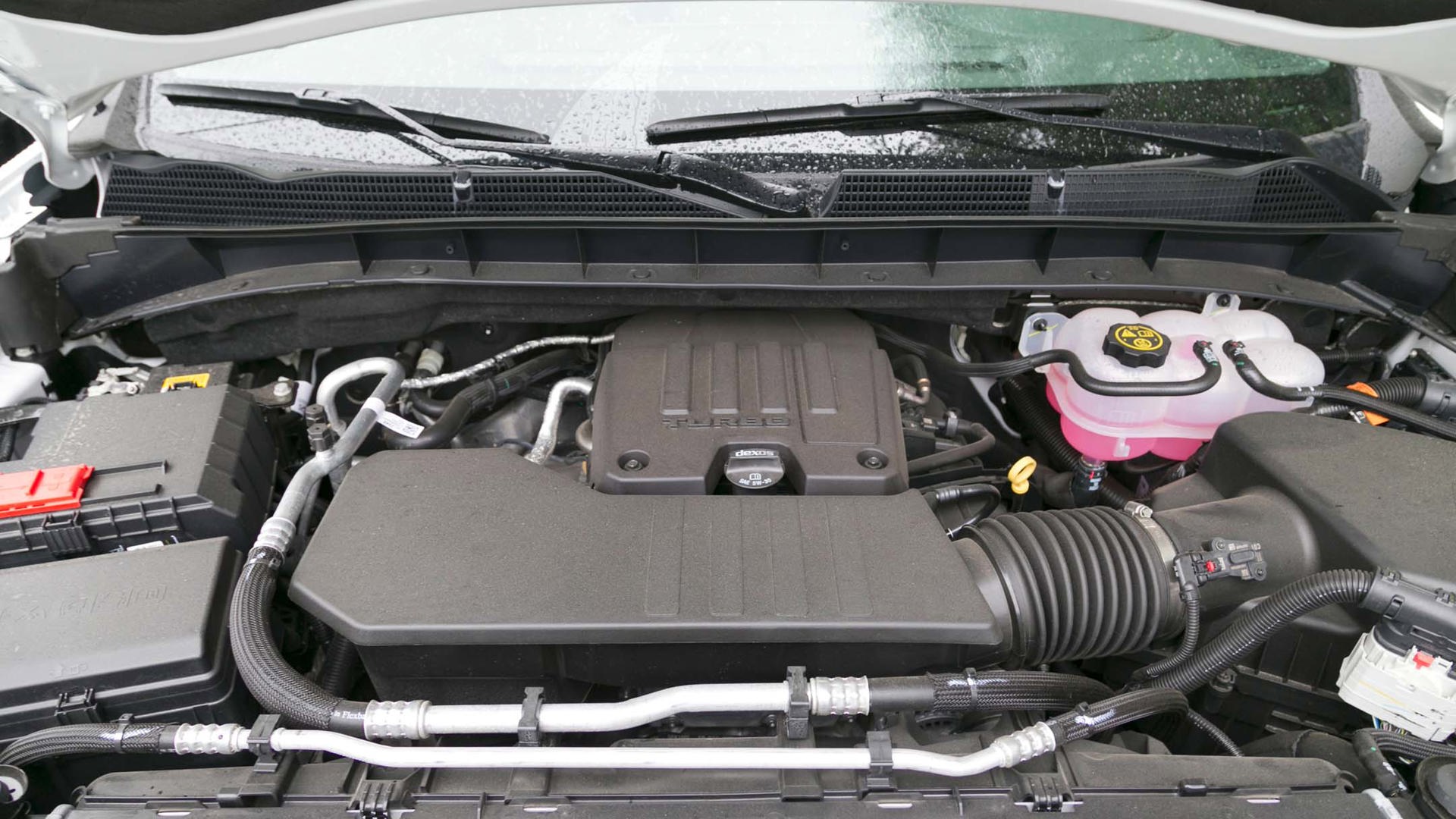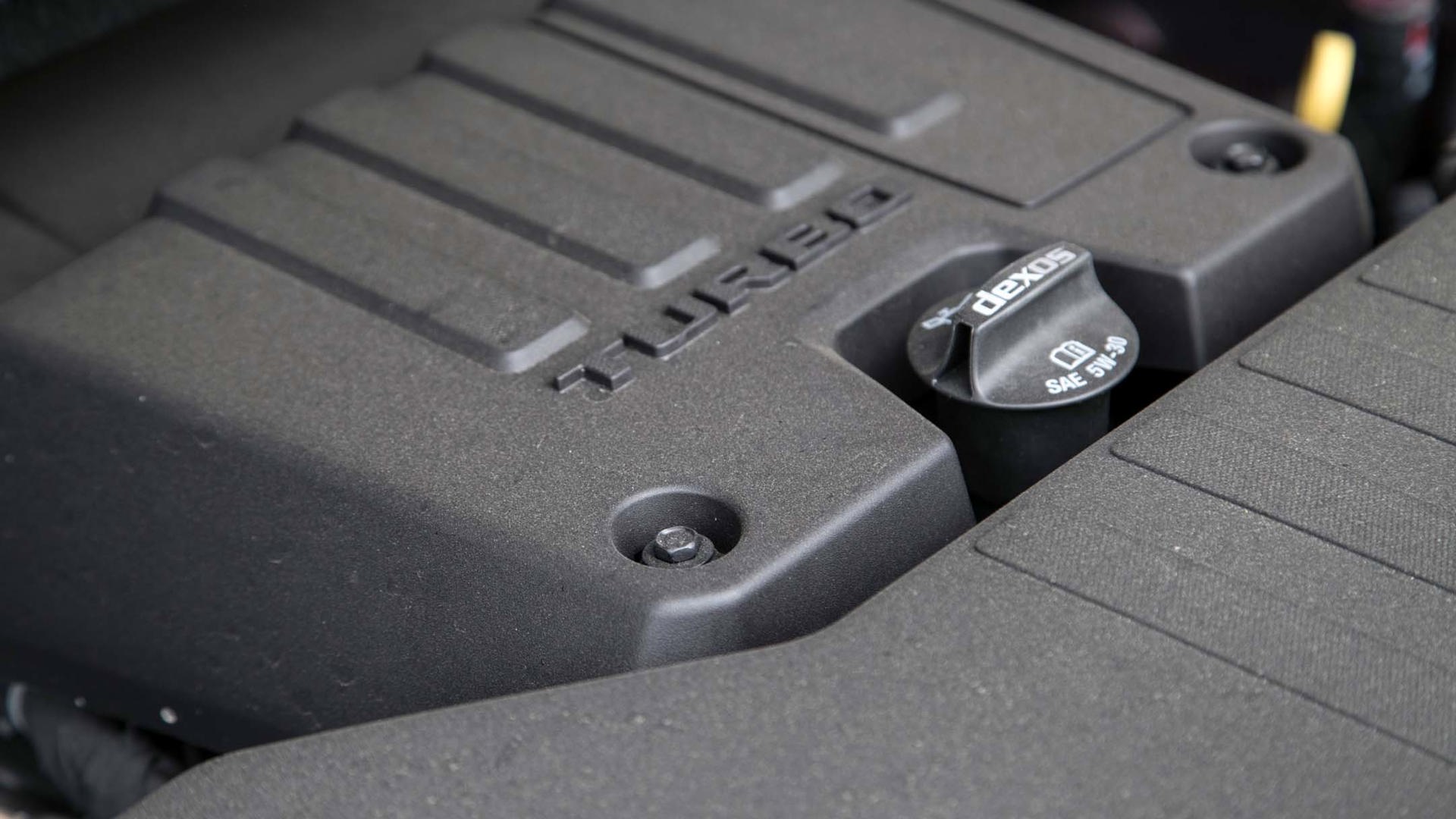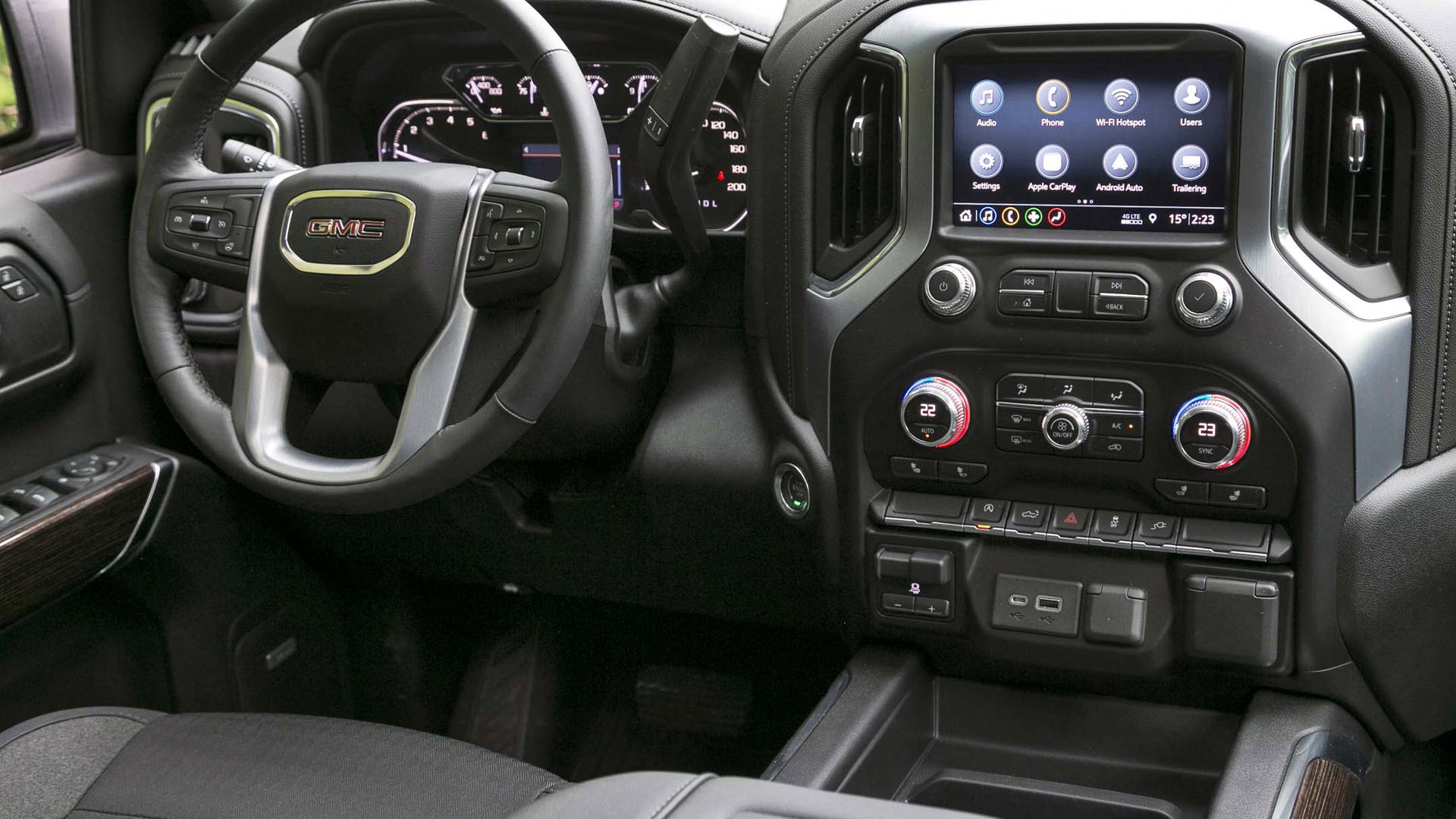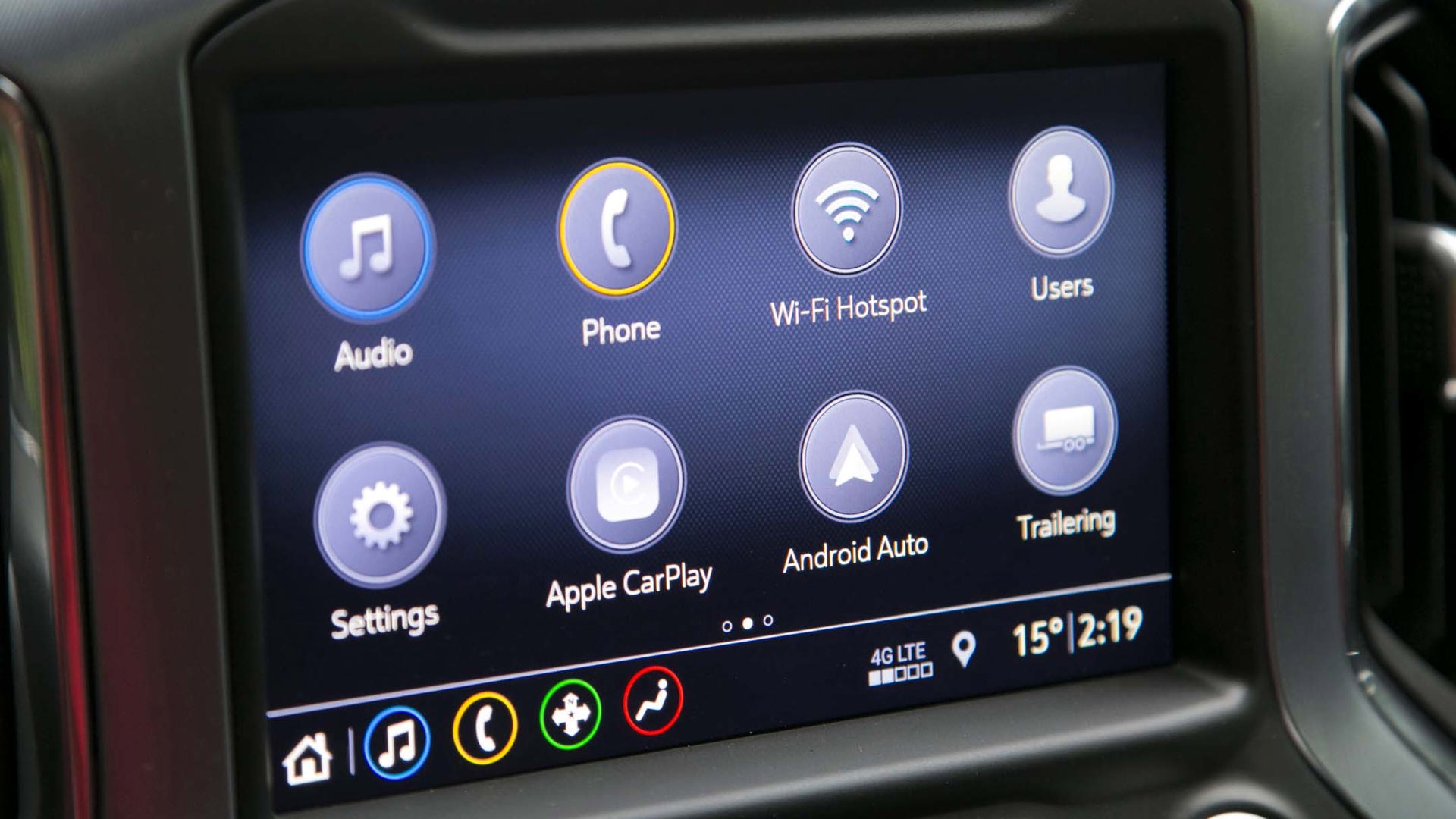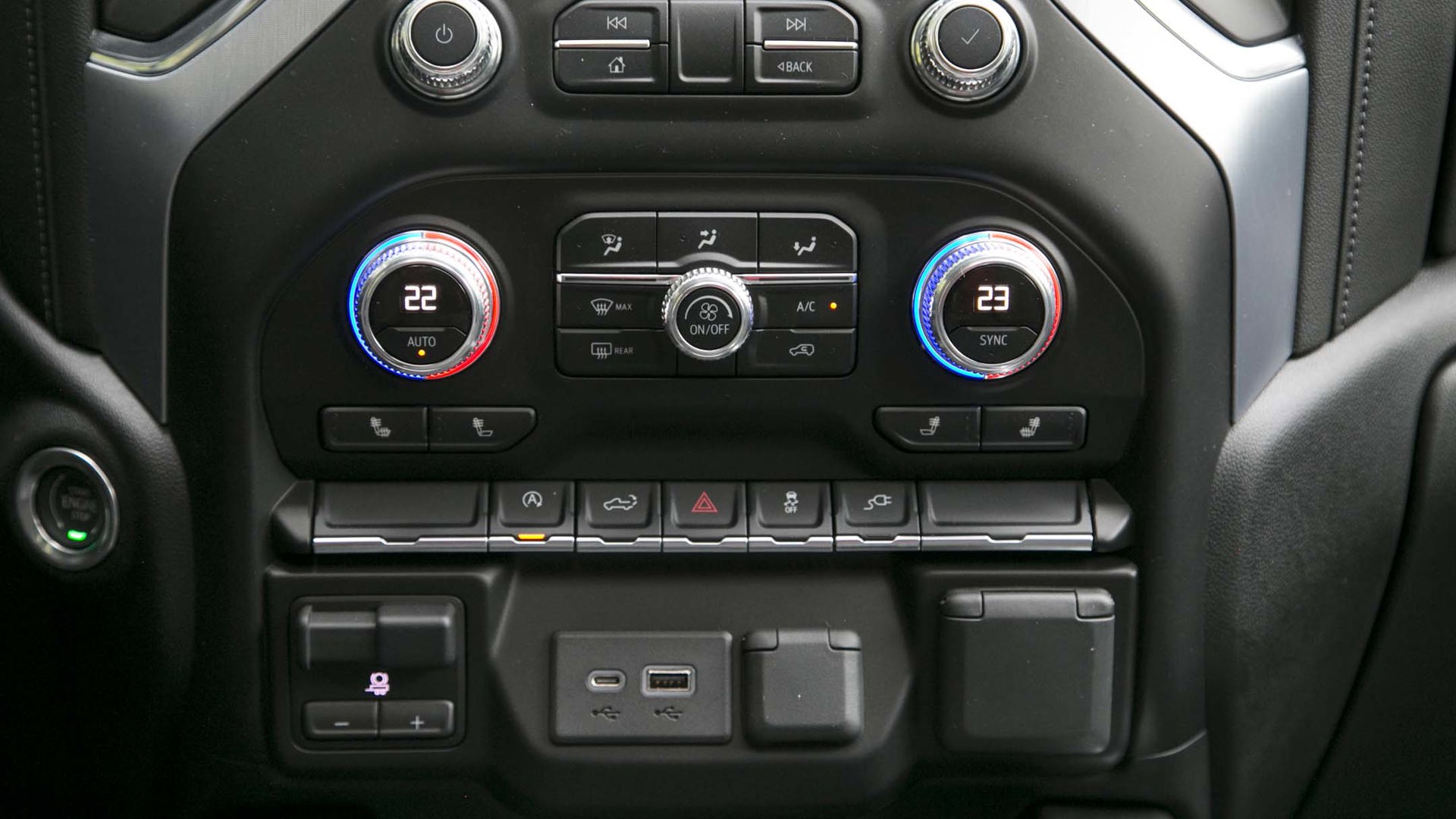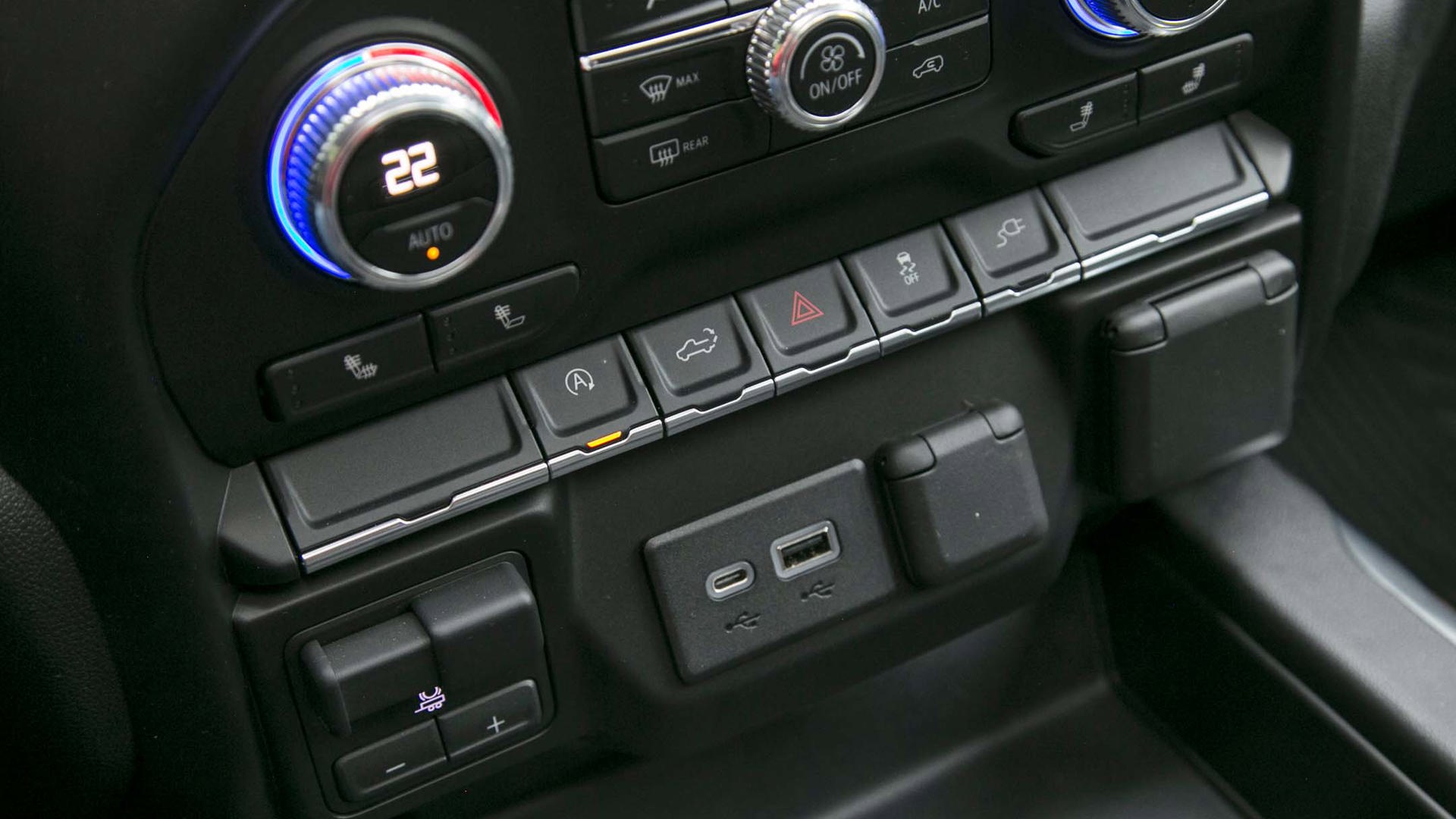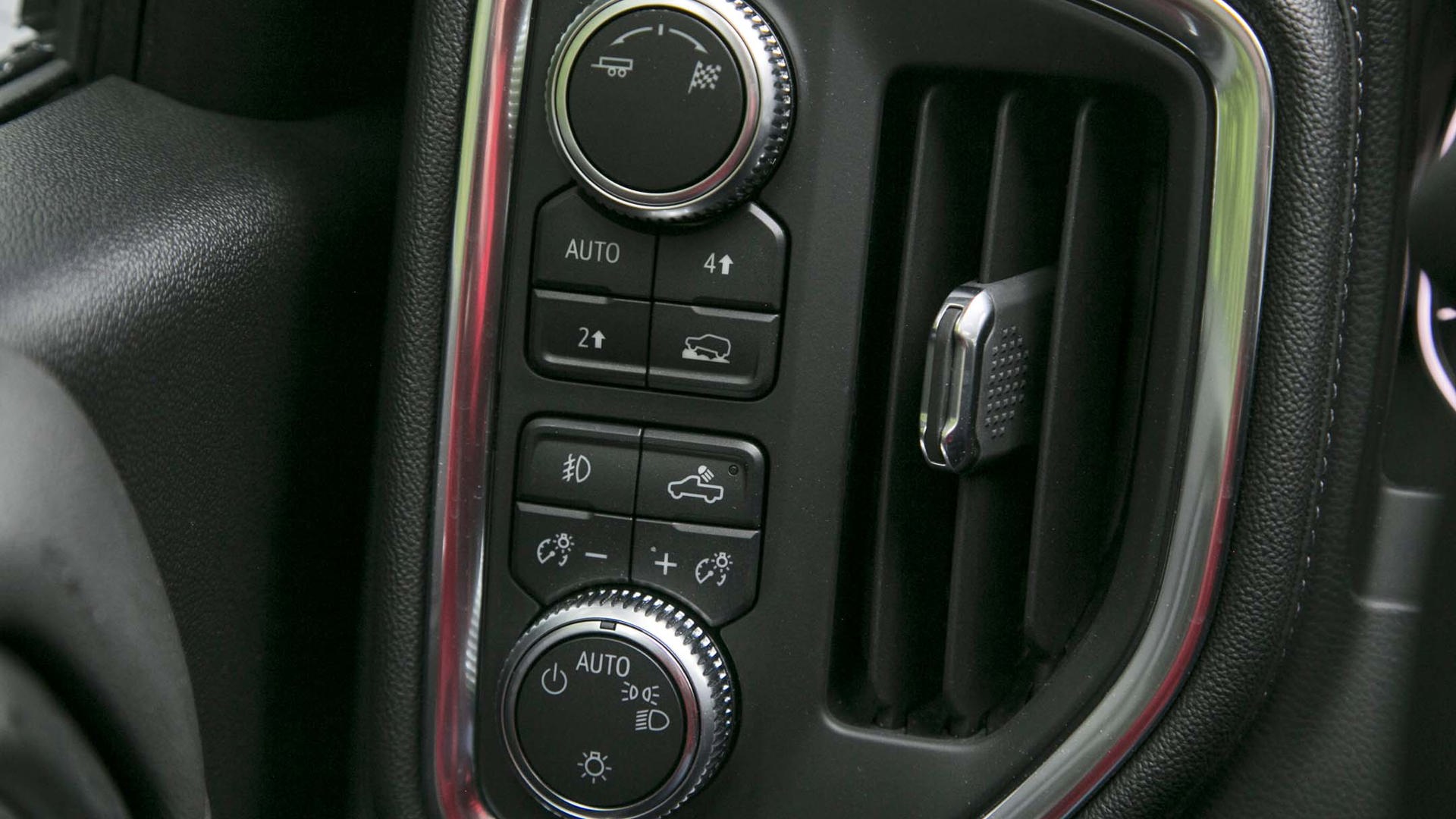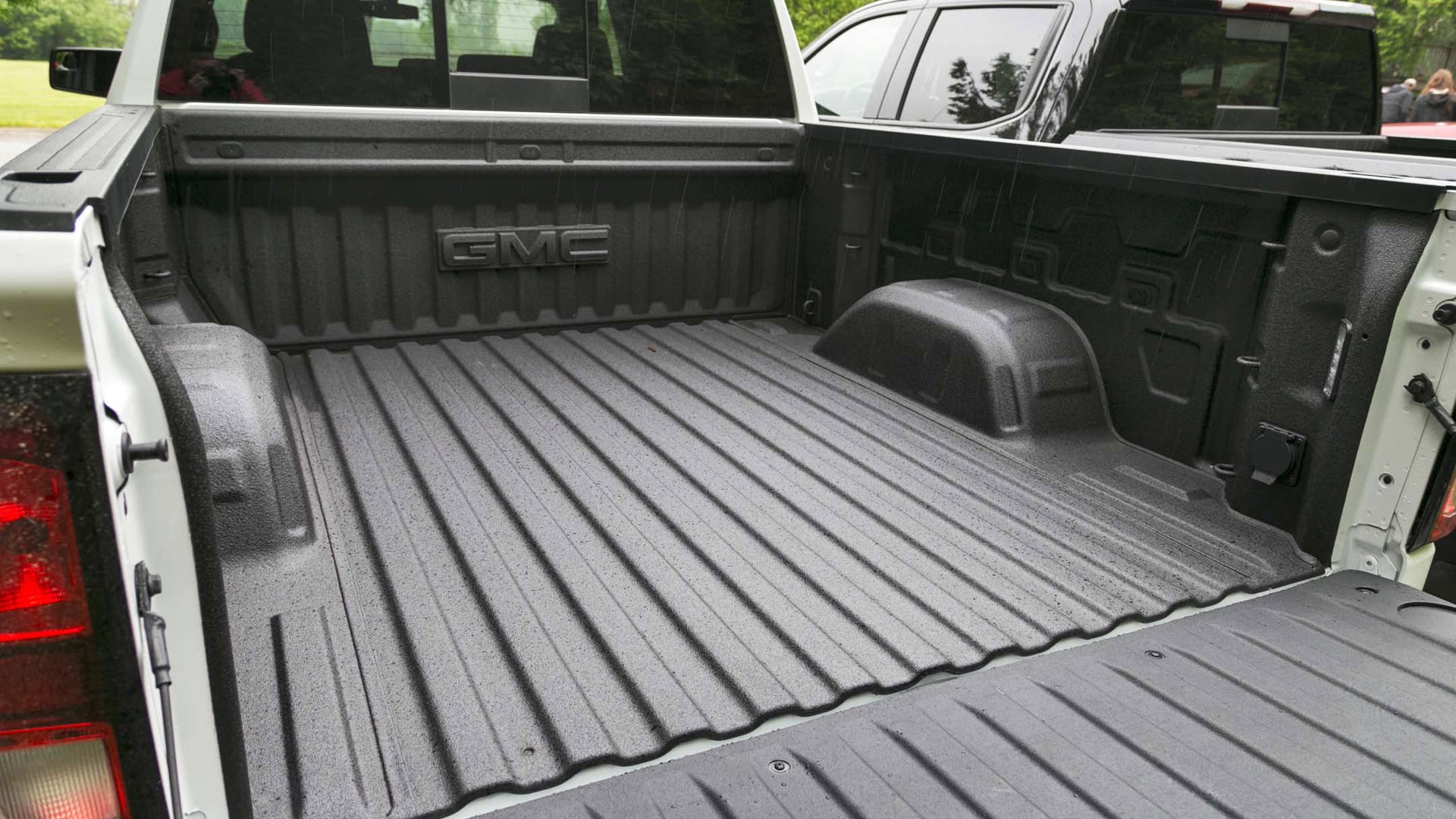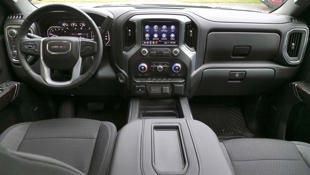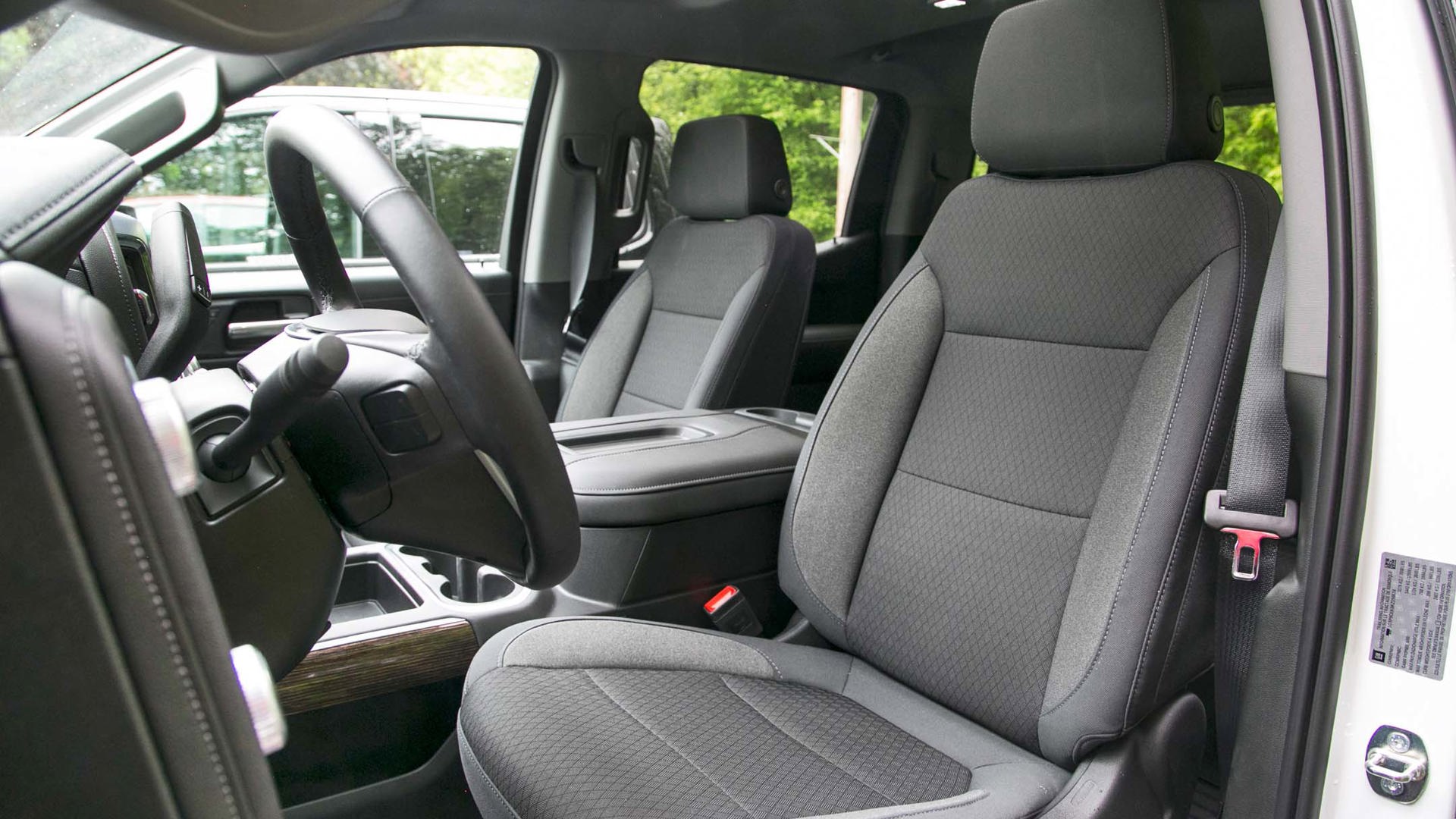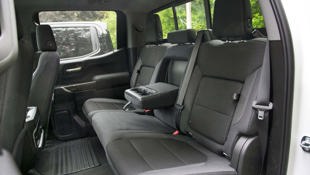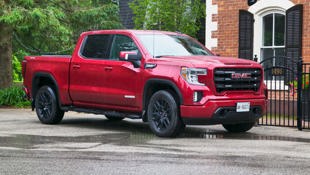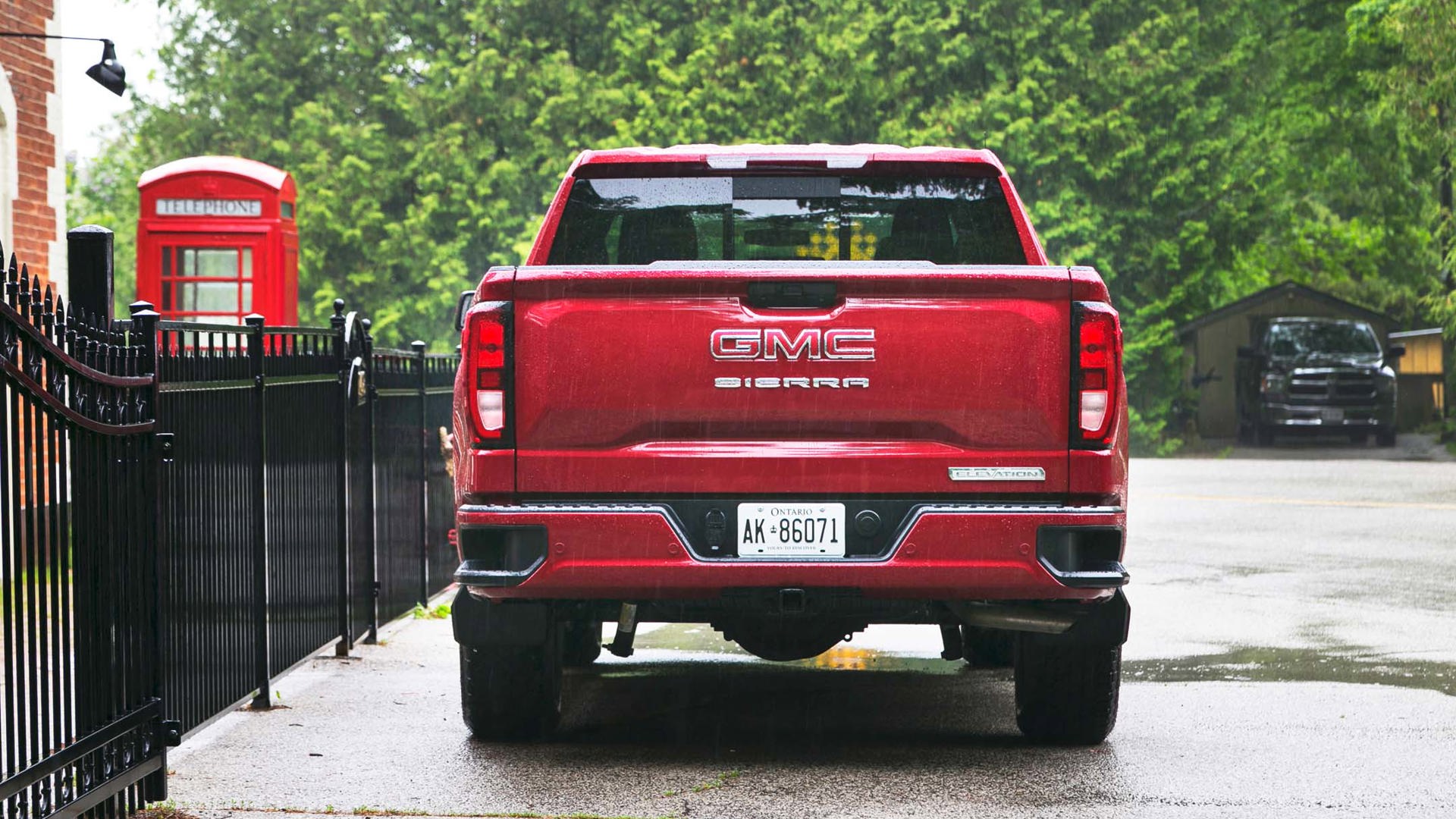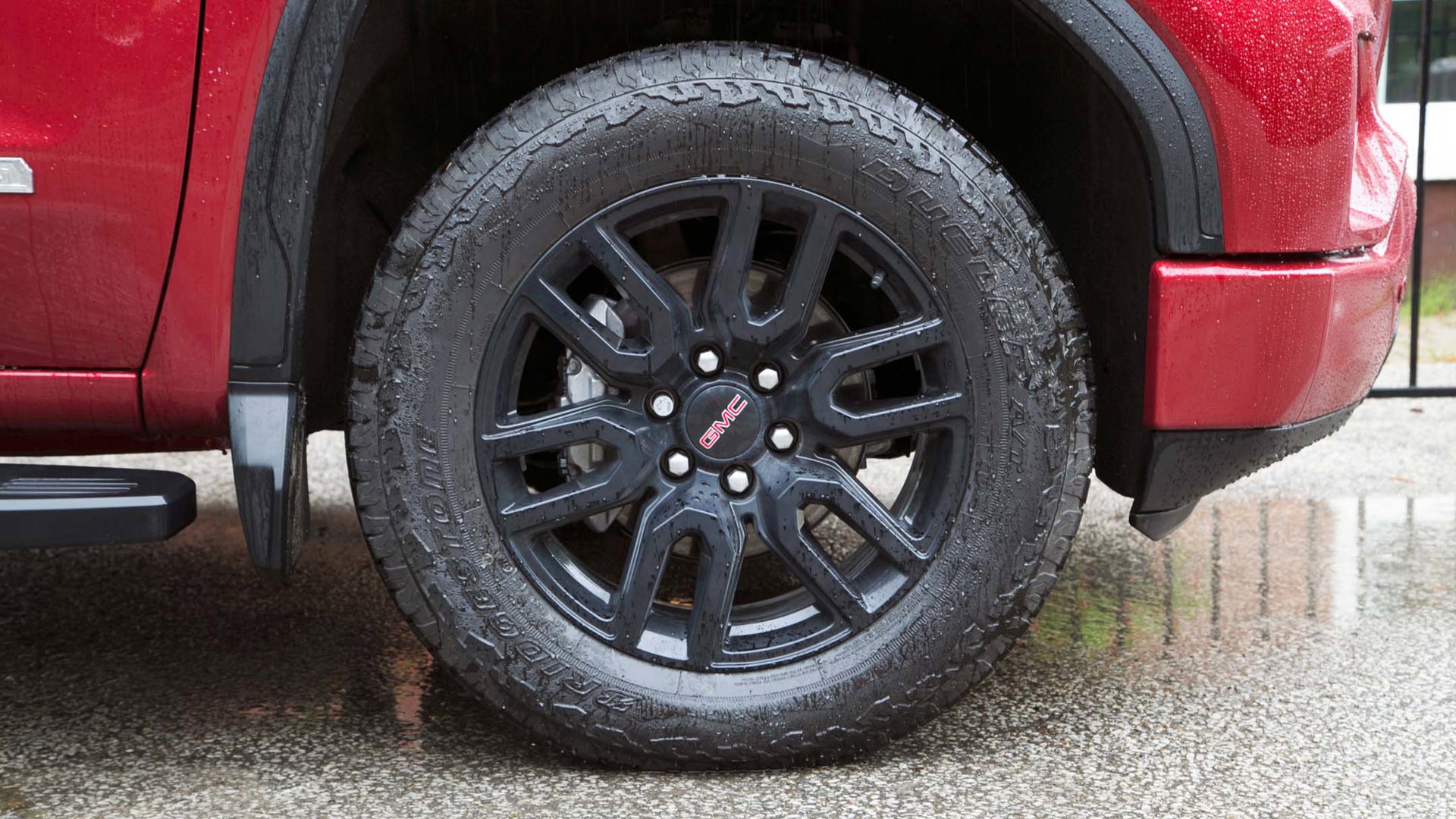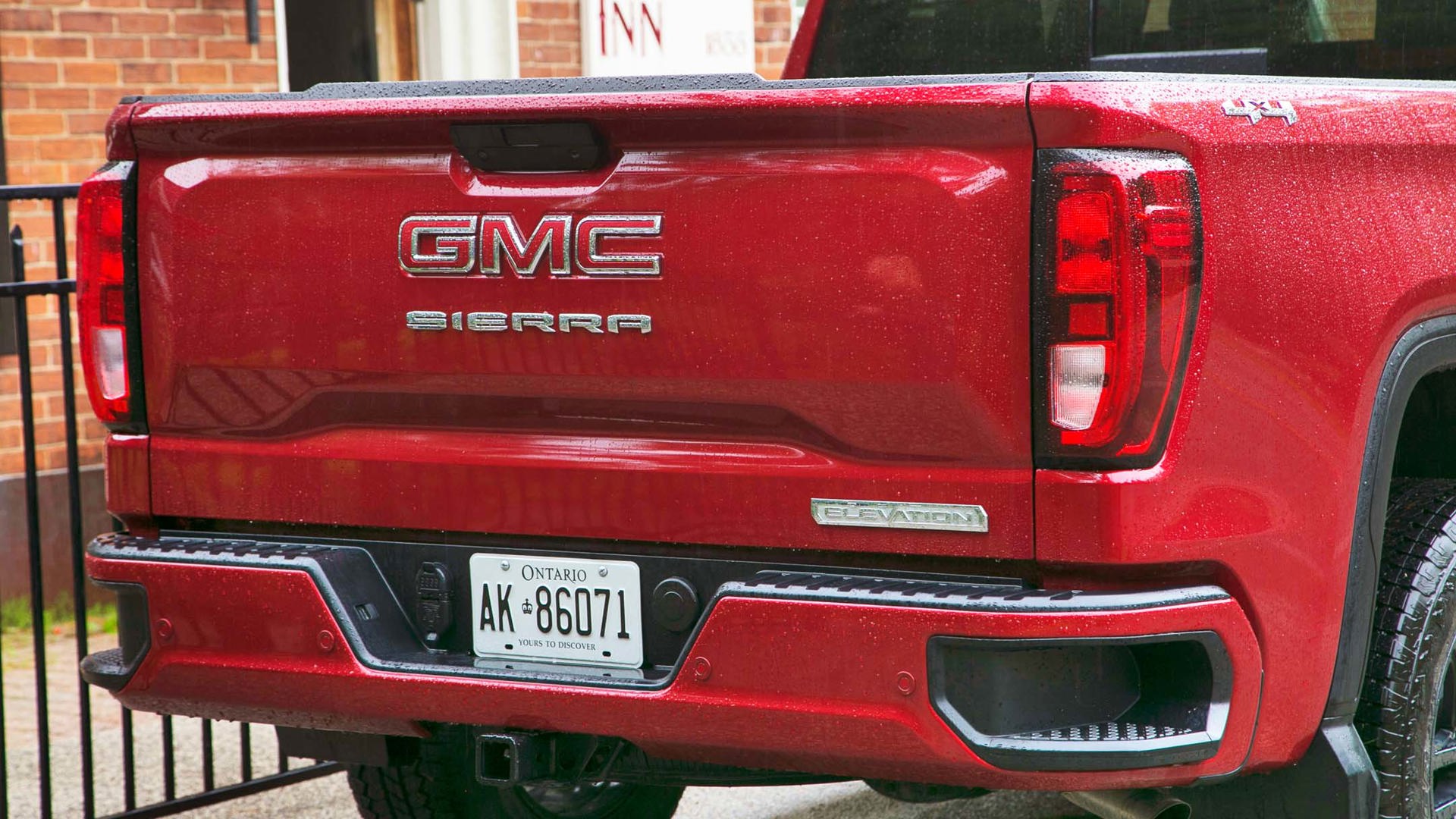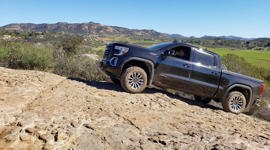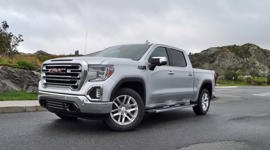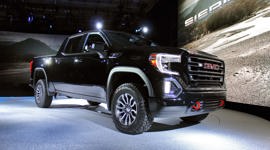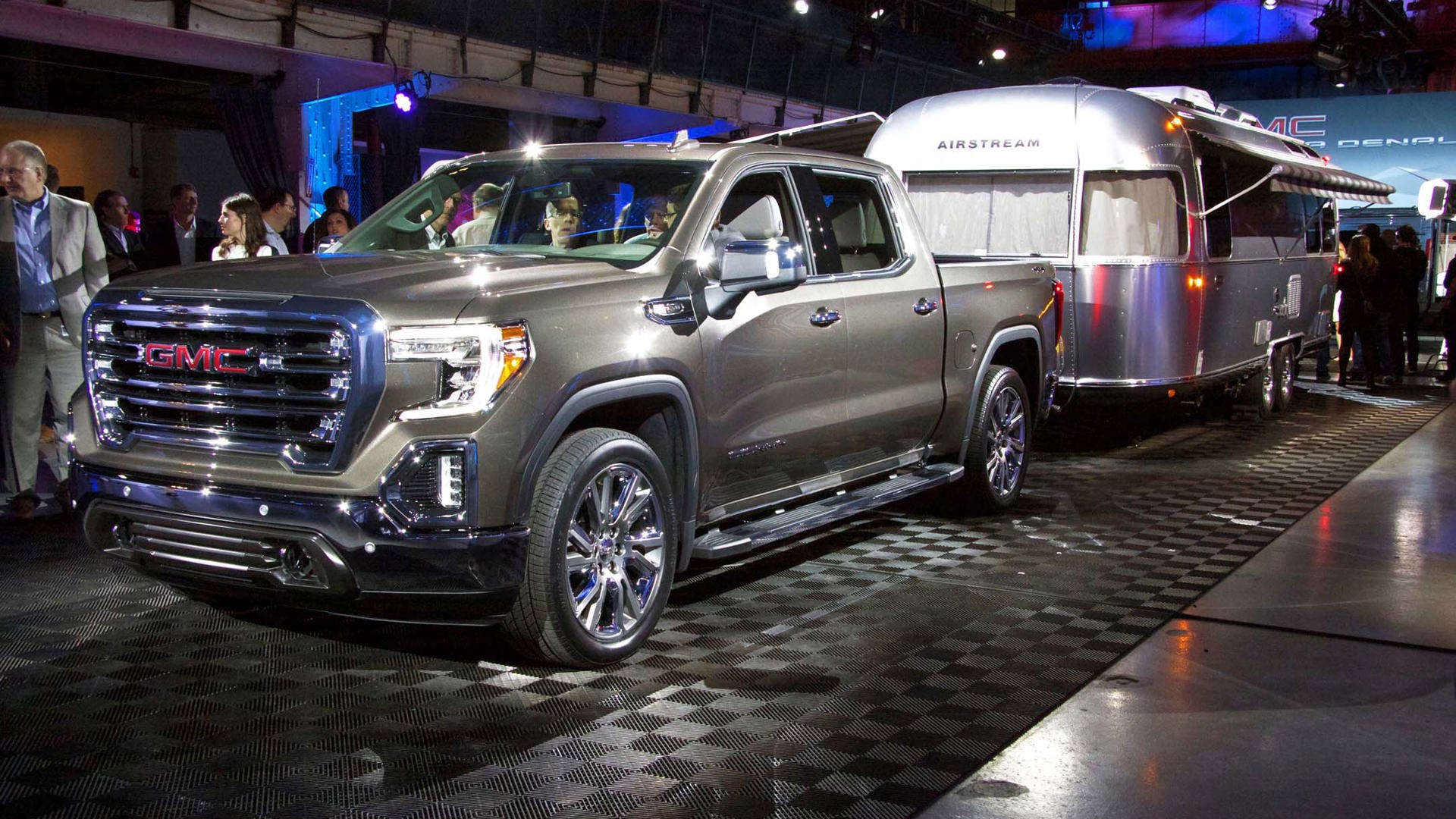While some sub-sections of the pickup truck market have levelled off in their upward sales trajectory, the popularity for luxury trucks continues to grow.
This is a working engine, not a playing engine.
It’s no secret more consumers are looking to trucks as their do-all choice for everything from family duties and errand-running to even commuting into metropolitan areas. Sure, some still use a truck for its intended utilitarian work capabilities, but it’s become a common sight to see chrome-clad, luxo-rigs at the local Whole Foods parking lot.
Despite being a few rungs down the ladder from the premium Denali sub-brand, this primarily aesthetic package is is proving to be extremely important for the GMC brand on the Canyon and Sierra – soon arriving on the Terrain SUV.
While early-production Canyon trucks with the Elevation Appearance Package (black wheels and grille but otherwise based on a run-of-the-mill SLE package truck) were available for our recent drive event, it’s the 2019 GMC Sierra Elevation that warrants a closer look.
The Elevation-branded vehicles are the ones being featured in GMC’s advertising, largely because it looks fresh and contemporary. This has the added benefit of catching the eye of younger truck consumers, and in fact, Sierra Elevation buyers average 38 years old, whereas the typical Canadian new truck buyer is 52, according to GMC’s market research.
Capturing new and conquest buyers from other brands is an important part of the Sierra Elevation’s task, and it does so not only with its good looks, but decent value, starting at a $51,000 MSRP that falls in line with the average new truck transaction price in Canada.
What’s most interesting about this new Sierra Elevation isn’t its blacked-out grille or wheels, but the new standard engine that’s a 2.7L four-cylinder turbo. This all-new power plant delivers a healthy 310 horsepower and 348 lb-ft of torque (which seriously outdoes the old 4.3L V6’s 285 hp and 305 lb-ft).
2.7L is rather large for a four-banger, and that quartet of pistons move through a long stroke, helping give that torquey output. Combined with the twin-scroll turbo, all 348 lb-ft of torque are available from 1,500 to 4,000 rpm – or generally where most drives will spend the majority of their driving time. Power peaks just below the very low 5,700 rpm redline, a reminder that this is a working engine, not a playing engine.
That said, with that abundance of torque spread so wide, the full-sized Sierra is quite responsive with the little engine under its hood. The truck pulls away from a stop in a lively manner, and has ample oomph for passing, as well.
The all-aluminum block and head make the new 2.7T a surprisingly light engine as well, weighing in at only 320 lb. Our drive was too brief (and soggy in a torrential downpour) to find some properly curvy roads and determine if the reduced nose weight makes the four-banger Sierra livelier than its V8 brethren. GMC quotes a 0–60 mph time of 6.8 seconds for a rear-wheel-drive truck with the 2.7T. Shockingly, this is only two-tenths of a second slower than a similarly equipped Sierra fitted with the top-shelf 6.2L V8, and should be significantly quicker than the old 4.3L V6 Sierras.
The increased immediacy and urgency of the engine is nice, but the real motivation behind the new turbo-four is efficiency. The smaller displacement coupled with the standard eight-speed automatic, GM’s Active Fuel Management (AFM) and auto stop-start technology contribute to a 12.6 L/100 km city rating, 10.9 L/100 km highway, and 11.8 L/100 km combined (EPA ratings for 2WD truck). That said, when worked hard, turbocharged engines rarely come close to estimated efficiency stats, and real-world efficiency may not live up to a buyer’s hopes.
While this drivetrain is likely to meet or exceed the needs and expectations of most Sierra buyers, its towing capability is notably lower than other quarter-ton pick-ups in the class. Its maximum tow rating of 3,265 kg falls significantly short of the 5,800 kg towable by the competitors, or even for those buyers who pick a Sierra Elevation with the optional 5.3L V8 engine (the 6.2L isn’t available in Elevation trim).
Still, GMC’s brand folks were quick to point out that the 2.7T’s hauling capabilities should be ample for most common recreational uses. It’ll easily tow an open trailer with a few snowmobile or dirt bike toys, and even the wet-weight of a mid-size travel trailer should still come in safely under the Elevation’s limits. Those with larger boats or RVs to haul should look at a more suitable towing option.
For around-town or commuting duties, the punchy little turbo is a good fit in the Sierra, and while the truck is reasonably well-insulated from wind and road noise, when working the four-cylinder, it certainly makes its presence known.
For many truck buyers, there’s a bravado that goes along with ownership that becomes a large part of the appeal. Tall, wide grilles and macho, chiselled flanks give the Sierra a rugged appearance, but the soundtrack of the diminutive engine does not match the looks.
From inside the cabin, the four-cylinder Sierra sounds coarse, buzzy and, well, like it’s something out of a Chevy Cruze, not a burly pickup. There’s not even the sound of a turbo whistle or blow-off valve to broadcast its boosted nature. It’s a trivial thing, for sure, and fleet buyers or pragmatic truckers will celebrate the smaller engine for its merits. Plenty of folks buy pick-ups for the emotional connection, not pragmatism, hence the need for the Elevation’s appearance; but surely a number of Sierra buyers will happily spend the extra $1,600 to get the more powerful 5.3L V8 engine option. What’s more, the smooth-running V8 is at least as efficient around town as the four, and gives up very little in terms of efficiency on the highway or combined averages.
GMC’s product gurus have clearly been paying attention to the desires and buying habits of younger pickup truck shoppers – the same customers they hope to retain for future truck purchases, moving up the hierarchy over time. The Elevation package is an attractive offering, and the development of greater efficiency and improved power and driveability with the 2.7T versus the old V6. Still, if it looks like a truck, and is expected to work like a truck, wouldn’t it be nice if it sounded like a truck, instead of an angry vacuum cleaner?
GMC’s Sierra and Canyon are available now with the Elevation package. The Terrain’s Elevation package arrives this autumn.
